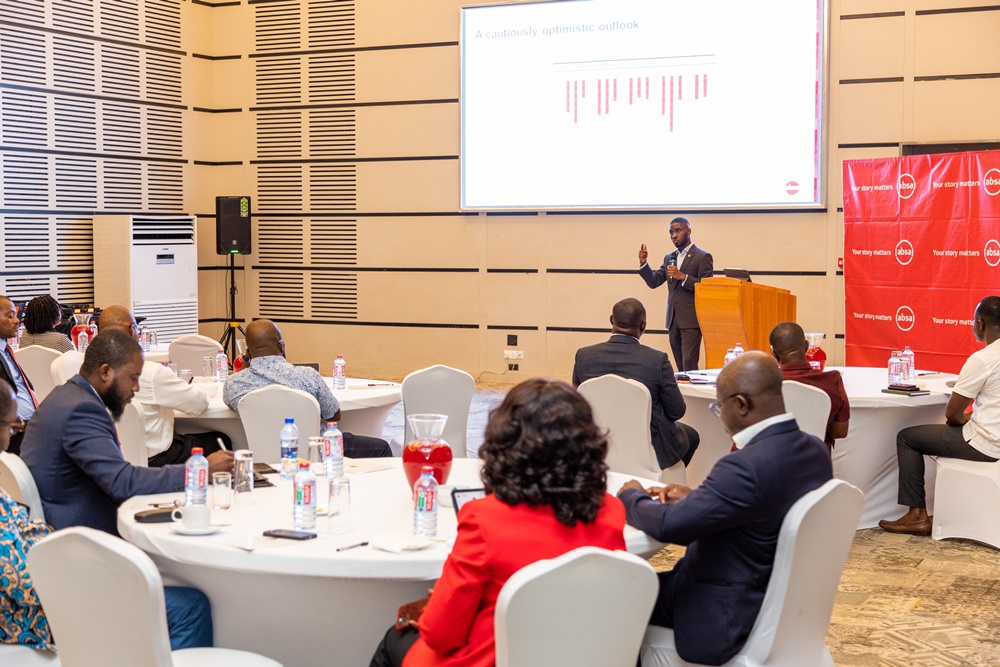
By Sheldon K. AMBAAH
The business environments and organizations are saddled with various risks that can impact their continuity, financial performance, and reputation. From economic volatility to regulatory shifts, climate concerns, and technological disruptions, these risks make it essential for businesses to adopt a comprehensive approach to manage uncertainties.
Enterprise Risk Management (ERM) provides a structured and strategic way to address these challenges, helping organizations not only mitigate risks but also align risk management with sustainability and profitability goals.
ERM is a holistic risk management framework that enables organizations to identify, evaluate, and respond to risks that could impede achieving their objectives. It’s not just about avoiding threats; it also provides the foundation for uncovering opportunities that may otherwise remain hidden.
Moreover, as businesses face growing pressure to integrate Environmental, Social, and Governance (ESG) criteria into their operations, ERM helps to bridge the gap between financial performance and corporate responsibility. By focusing on sustainable practices and aligning with broader ESG expectations, ERM equips organizations to build resilience, enhance stakeholder trust, and secure long-term profitability.
This article delves into the strategic role of ERM in promoting sustainability and profitability. We’ll explore the key drivers behind ERM adoption, review essential frameworks, and analyze how ERM contributes to both risk reduction and business growth. By understanding and implementing ERM effectively, organizations can navigate today’s complex risk environment, positioning themselves for sustainable success.
- What is Enterprise Risk Management?
Enterprise Risk Management (ERM) is a holistic, structured approach that enables organizations to identify, assess, and manage risks across their entire operations. Unlike traditional risk management, which often focuses on specific areas (e.g., financial or operational risks), ERM encompasses all categories of risk, including strategic, financial, operational, technological, and compliance risks.
Key Elements of ERM
- Risk identification: Recognizing potential events or circumstances that could impact the organization, positively or negatively.
- Risk assessment: Evaluating the likelihood and potential impact of identified risks.
- Risk response: Developing strategies to address each risk, such as risk avoidance, reduction, transfer, or acceptance.
- Risk monitoring: Continuously tracking and reviewing risks and the effectiveness of response strategies.
Importance of ERM
ERM provides a framework that aligns risk management with an organization’s long-term goals and values. Rather than merely reacting to risks as they arise, ERM allows businesses to take proactive measures to mitigate potential threats and optimize their decision-making process. This shift toward a proactive, organization-wide approach supports resilience, efficiency, and sustained growth.
Traditional vs. Modern ERM
While traditional risk management largely focused on loss prevention, modern ERM positions itself as a value-generating tool. Today’s ERM not only protects business assets but also facilitates value creation by allowing organizations to take calculated risks, pursue new opportunities, and ensure that risks are strategically aligned with growth objectives.
- Key drivers of ERM for sustainability and profitability
The increased adoption of ERM is driven by numerous external and internal factors, which have made risk management more complex and essential to business success.
Globalization and market volatility
As businesses expand globally, they become increasingly exposed to new risks, including economic downturns, trade disputes, and supply chain disruptions. ERM enables organizations to navigate this volatility by anticipating and preparing for potential market changes, reducing the financial and operational impacts on the business.
Regulatory and compliance pressures
The global regulatory environment continues to tighten, with rising expectations for transparency, accountability, and compliance. ERM helps businesses address these regulations systematically, avoiding penalties and fostering trust with investors, customers, and regulators. By integrating regulatory compliance into ERM, organizations support long-term sustainability and reduce compliance-related risks.
Technological advancements
Rapid technological changes introduce a unique set of risks, such as cybersecurity threats, data privacy concerns, and the risk of technology obsolescence. ERM incorporates these technology-related risks, allowing organizations to embrace digital innovation while managing potential vulnerabilities. This approach is essential for modern businesses, where technology drives competitive advantage.
Environmental and social concerns
With increased awareness around environmental sustainability and social responsibility, businesses face new pressures to align with ESG goals. ERM helps organizations manage these ESG-related risks by assessing potential environmental impacts, labour issues, and social responsibilities. This alignment with ESG goals improves corporate reputation, stakeholder trust, and long-term profitability.
- ERM frameworks and standards
Several ERM frameworks and standards provide structured guidance, ensuring organizations can implement ERM effectively and consistently.
COSO Framework
The COSO (Committee of Sponsoring Organizations) framework is one of the most commonly used ERM standards, promoting a comprehensive approach to risk management that aligns with strategic planning. It emphasizes that effective ERM should be integrated across the organization, supporting decision-making at all levels.
ISO 31000
ISO 31000 offers principles and guidelines for implementing risk management, adaptable to organizations of any size or sector. Unlike prescriptive frameworks, ISO 31000 is flexible and encourages organizations to tailor risk management practices to their unique needs, enhancing ERM alignment with strategic objectives.
Benefits of framework adoption
Implementing a structured ERM framework helps organizations standardize their risk management practices, enabling consistent assessment, response, and monitoring. Adopting frameworks like COSO and ISO provides organizations with a foundational structure that aligns ERM with their sustainability and profitability targets, ensuring that risks are managed with both immediate and long-term goals in mind.
- Strategic role of ERM in sustainability
ERM plays a pivotal role in advancing sustainability, particularly in light of increasing expectations for businesses to manage ESG-related risks.
Integration with ESG goals
ERM helps businesses address environmental, social, and governance risks, aligning with broader ESG criteria. By evaluating ESG risks—such as carbon emissions, labor relations, and corporate governance—ERM provides a pathway to integrate these concerns into core risk management processes, ensuring compliance and supporting sustainable business practices.
Long-term resilience
ERM contributes to organizational resilience by helping businesses anticipate and prepare for risks before they materialize. By addressing emerging risks proactively, ERM enables organizations to adapt to changes in market conditions, regulatory requirements, and technological advancements, minimizing disruptions and supporting long-term viability.
Enhanced reputation and stakeholder trust
ERM fosters transparency, which builds stakeholder confidence. By aligning with social and environmental expectations, businesses can enhance their reputation, demonstrating a commitment to responsible practices. This reputation-building aspect of ERM is essential for sustaining competitive advantage in today’s socially conscious marketplace.
- How ERM Contributes to Profitability
Beyond supporting sustainability, ERM is an instrumental tool for enhancing profitability by reducing costs and optimizing resource allocation.
Risk reduction equals cost reduction
ERM enables organizations to reduce costs by identifying risks early and implementing strategies to mitigate them. By proactively managing risks such as supply chain disruptions, compliance failures, or operational inefficiencies, ERM helps prevent financial losses, fines, and reputational damage, contributing to improved profitability.
Innovation and growth
By providing a structured way to manage risks associated with new initiatives, ERM encourages organizations to pursue innovative projects with confidence. Whether launching a new product or entering a new market, ERM helps identify risks and assess their potential impact, ensuring a balanced approach to growth and innovation.
Informed decision-making
ERM provides leaders with insights into the risk-return profiles of different initiatives, supporting informed decision-making. By considering potential risks and rewards, ERM helps businesses choose projects and investments that align with profitability goals, maximizing returns and minimizing exposure to loss.
Case studies
Many companies have realized financial gains through effective ERM. In the energy sector, companies use ERM to manage regulatory risks and commodity price volatility, leading to stable revenue. Financial institutions leverage ERM to address credit and market risks, enhancing capital efficiency and profitability.
- Implementing an effective ERM strategy
Implementing an effective ERM strategy requires a planned approach, executive support, and a risk-aware culture throughout the organization.
Steps to implementation
- Risk identification and assessment: Develop a process to identify and assess risks across the organization, engaging stakeholders in the process.
- Risk response development: Prioritize risks and determine appropriate response strategies, such as mitigation or transfer.
- Monitoring and reporting: Establish monitoring systems to track risk exposure and response effectiveness.
- Communication and training: Educate employees on ERM principles, emphasizing their role in the risk management process.
Challenges and solutions
Implementing ERM may face challenges like resistance to change, limited resources, and integration complexity. Overcoming these obstacles requires strong leadership commitment, clear communication of ERM’s benefits, and a phased implementation to ease the transition.
Leadership and culture
Leaders play a vital role in fostering a risk-aware culture by demonstrating commitment to ERM and integrating it into strategic decision-making. A risk-aware culture ensures that ERM principles are consistently applied, strengthening the organization’s ability to manage uncertainties effectively.
Ongoing monitoring and adaptation
Risks evolve, and ERM must adapt to remain relevant. Organizations should continuously review their ERM processes, updating risk assessments and response strategies as market conditions, regulations, and technologies change. This adaptability ensures that ERM supports both sustainability and profitability, even as the risk landscape shifts.
Conclusion
Enterprise Risk Management is a critical strategic tool that equips organizations to manage uncertainty, capitalize on opportunities, and navigate an increasingly complex risk landscape. By integrating ERM with sustainability and profitability objectives, businesses can build resilience, enhance stakeholder trust, and secure long-term growth.
With a comprehensive ERM strategy, organizations can align risk management with ESG principles, addressing social and environmental risks in tandem with financial ones. ERM also contributes to profitability by minimizing costs, supporting innovation, and guiding decision-making. In a world of constant change and increasing scrutiny, ERM is not only a safeguard—it’s a pathway to sustainable success.
>>>the writer is a Consultant
The post Enterprise risk management – a strategic tool for sustainability and profitability appeared first on The Business & Financial Times.
Read Full Story













Facebook
Twitter
Pinterest
Instagram
Google+
YouTube
LinkedIn
RSS